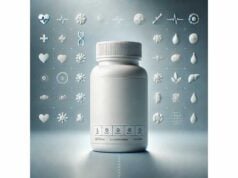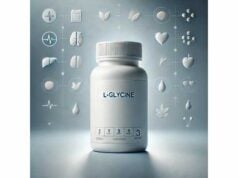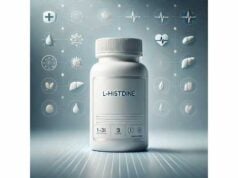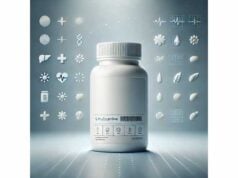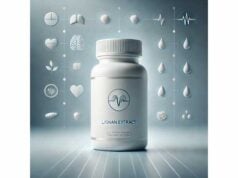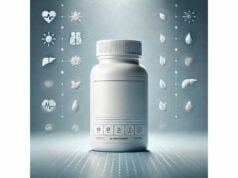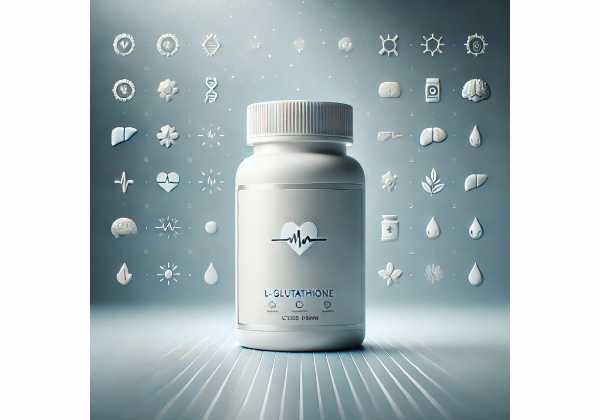
L-glutathione (often shortened to “glutathione” or “GSH”) is a small tripeptide that the body makes from glutamate, cysteine, and glycine. It works everywhere in the body as a primary antioxidant, redox buffer, and detox partner for many enzymes. Because glutathione levels drop under chronic stress, aging, metabolic disease, and toxin exposure, many people explore supplements to restore their “redox reserve,” support immunity, and aid liver function. In recent years, better oral forms, like liposomal capsules, have improved delivery, and several controlled studies have measured changes in blood glutathione, oxidative stress markers, and select clinical outcomes. Still, results vary by dose, formulation, and population. This guide explains how glutathione works, what the strongest evidence shows, how to use it safely, and where risks or interactions matter. You will also find clear dosage ranges, practical timing tips, and an honest appraisal of which benefits are well-supported and which remain speculative.
Fast Facts
- Oral doses of 250–1,000 mg per day can raise blood glutathione and lower oxidative stress markers in some groups.
- Liposomal glutathione (typically 500 mg/day) shows better absorption markers than standard powder in small trials.
- Avoid intravenous or compounded injectable glutathione outside medical supervision due to safety concerns.
- Typical oral dosage: 250–1,000 mg/day; some trials used 500 mg/day for 3–6 months.
- People with active cancer therapy, certain chemotherapies, severe asthma, or sulfite sensitivity should discuss use with their clinician first.
Table of Contents
- What is L-glutathione and how does it work?
- Which benefits actually hold up in studies?
- How to use glutathione day to day
- How much glutathione and when?
- Side effects, interactions, and who should avoid it
- Evidence check: what the science really says
What is L-glutathione and how does it work?
Glutathione is a three-amino-acid molecule (glutamate + cysteine + glycine) that cells synthesize and recycle continuously. In healthy cells, most glutathione exists in its reduced form (GSH), ready to neutralize reactive oxygen species (ROS) and maintain protein thiol groups in their proper state. When GSH donates an electron to quench an oxidant, two GSH molecules combine into oxidized glutathione (GSSG). The enzyme glutathione reductase then recycles GSSG back to GSH using NADPH. This cycle protects cellular structures, keeps enzymes functional, and supports detoxification via glutathione-S-transferases (GSTs), which conjugate GSH to reactive chemicals for elimination through bile or urine.
Beyond classic antioxidant duties, glutathione influences:
- Mitochondrial function: Adequate GSH dampens mitochondrial ROS and helps sustain ATP production under metabolic stress.
- Immune balance: GSH contributes to antigen processing and cytokine signaling, shaping T-cell responses and redox-sensitive transcription factors.
- Detox and drug handling: Many xenobiotics and endogenous metabolites are rendered water-soluble through glutathione conjugation.
- Skin melanogenesis: GSH can modulate tyrosinase activity and the eumelanin/pheomelanin balance, which partly explains its popularity in cosmetics; however, clinical impacts vary by route and dose.
Why supplement if the body can make it? Cysteine is often the rate-limiting amino acid for synthesis. Aging, chronic hyperglycemia, inflammation, environmental exposures, infections, intense training, and limited dietary sulfur amino acids can all tilt the balance toward depletion. In such states, measured blood and tissue GSH pools may fall, and oxidative damage markers (like 8-hydroxy-2-deoxyguanosine) can rise.
A frequent concern used to be bioavailability: early work suggested that standard oral GSH might be digested into its amino acids. Newer research, particularly with liposomal preparations and longer dosing windows, indicates that certain oral forms can raise blood and cellular glutathione and reduce oxidative stress markers in some populations. The magnitude of change depends on baseline deficiency, dose, formulation, timing, and adherence.
Key takeaways for mechanism: glutathione is central to cellular defense; it supports mitochondria, immunity, and detox pathways; and supplementation may help when endogenous production or recycling is outpaced by demand.
Which benefits actually hold up in studies?
Raising glutathione status. Multiple controlled trials report increases in glutathione pools (whole blood, plasma, erythrocytes, and peripheral blood mononuclear cells) following oral use. Increases are typically seen within 2–12 weeks, more consistently when baseline levels are low and when liposomal formulations are used. Alongside higher GSH, studies often show lower oxidative stress markers (for example, malondialdehyde or 8-OHdG), consistent with improved redox balance.
Metabolic health support (select groups). In people with type 2 diabetes—especially older adults—oral glutathione has been associated with improved oxidative stress profiles and, in some analyses, stabilization or modest improvement in glycemic parameters (such as HbA1c). These effects appear stronger in individuals with greater baseline oxidative burden. Importantly, glutathione is not a standalone diabetes therapy; rather, it may complement standard care in appropriate patients, under clinician guidance.
Immune and redox resilience. By replenishing intracellular GSH, small trials have reported shifts in immune markers (for instance, increases in Th1-associated cytokines) and reduced oxidative burden. These immune effects are subtle and context-dependent. They are most relevant where chronic oxidative stress and low glutathione are documented.
Skin and dermatology. Glutathione’s role in melanogenesis has stirred consumer interest. Oral studies show mixed results: some note small changes in skin tone or UV spots, while others are neutral. Topical forms can have local effects, but systemic cosmetic claims—particularly those tied to high-dose injections—are inconsistent and come with safety concerns (see Safety).
Exercise and recovery. Early work with glutathione alone or in combination with amino acids (for example, citrulline) explores vascular function, performance, and oxidative stress. Findings are preliminary and vary by protocol; at most, these suggest a potential niche for athletes with high oxidative loads, but they do not rise to the level of definitive guidance.
Liver and detox narratives. Glutathione is indispensable for phase II detox, yet translating this biochemistry to clinical endpoints is complex. People often report subjective benefits (less fatigue or “chemical sensitivity”). Objective outcomes beyond redox markers remain limited, and responses are individualized. Clinicians sometimes measure surrogate markers (GGT, bilirubin, or specific toxin adducts), but rigorous trials connecting oral glutathione to hard detox outcomes are sparse.
What does this mean for you? If you’re older, metabolically stressed, or have documented low GSH or elevated oxidative markers, you are more likely to see measurable benefits (higher GSH, lower oxidative stress). If you’re healthy with robust redox status, effects may be modest or undetectable. For cosmetic skin lightening, expectations should remain conservative when using oral products.
How to use glutathione day to day
Choose a form that fits your goals and budget.
- Standard reduced L-glutathione (GSH) powder or capsules: Widely available, typically 250–1,000 mg per day. Evidence for raising blood GSH is mixed but improves with longer use (≥8–12 weeks) and in people with lower baseline GSH.
- Liposomal glutathione: Encapsulates GSH within lipid layers to improve stability and absorption; commonly dosed at 500 mg/day. Several small trials show clearer increases in blood and cellular GSH versus baseline.
- Sublingual or oral-mucosal products: Designed to bypass some digestion. Data are promising but less extensive than for liposomal capsules.
- Precursors instead of GSH (e.g., N-acetyl-L-cysteine plus glycine): These can raise endogenous synthesis and may be practical for some users, especially when cost or tolerance is an issue.
Timing and meals. Take glutathione once daily with or without food. Some people prefer morning dosing to align with daytime oxidative challenges. If using 1,000 mg/day, splitting into 500 mg twice daily may smooth GI tolerance.
Stacking for synergy.
- Vitamin C (250–500 mg/day) helps recycle oxidized GSH.
- N-acetyl-L-cysteine (600–1,200 mg/day) provides cysteine for synthesis; it can be used alongside or instead of GSH, depending on goals and tolerance.
- Glycine (1–3 g/day) provides the third building block and can be useful in older adults with low dietary glycine.
- Selenium (50–100 mcg/day) supports glutathione peroxidase activity, but avoid stacking multiple selenium-rich products to prevent excess intake.
Duration. Most redox markers respond within 2–12 weeks. If you’re targeting a lab-based endpoint (for example, 8-OHdG), re-test at 8–12 weeks. If you’re symptom-tracking (fatigue, recovery), keep non-glutathione variables steady (sleep, coffee, training) for a fair trial.
Quality cues. Look for:
- Stability testing and clear labeling of reduced L-glutathione content per capsule.
- Third-party testing (identity, potency, contaminants).
- Transparent formulation (if liposomal, the phospholipid sources and total GSH per serving).
Who tends to notice benefits? Individuals with higher oxidative load—older adults, people with insulin resistance or type 2 diabetes, those exposed to pollutants or intense training blocks—report more consistent changes than young, healthy users. If your diet is rich in sulfur amino acids (eggs, whey protein, meat), and you’re otherwise low-stress, measurable changes may be smaller.
What about nebulized or IV glutathione? Avoid self-directed non-oral routes. Nebulized glutathione can trigger bronchospasm in sensitive people, and compounded injectable products have been linked to endotoxin-related adverse events in the past. For clinical, supervised use, follow your specialist’s guidance.
How much glutathione and when?
Everyday maintenance (general wellness):
- 250–500 mg/day of reduced L-glutathione, or 500 mg/day liposomal, for 8–12 weeks. This range is commonly used to support redox balance and is well tolerated in most adults.
Elevated oxidative stress (older adults, metabolic risk):
- 500–1,000 mg/day (standard) or 500 mg/day (liposomal) for 12–24 weeks. In older or metabolically stressed adults, this duration better maps to the timeframes where redox markers and, in some subgroups, glycemic measures have shifted.
Athletic blocks or recovery windows:
- 500 mg/day during intensified training cycles (4–8 weeks). If performance is your primary endpoint, monitor metrics (power outputs, HRV, RPE) to ensure antioxidants are not blunting desired training adaptations. Most practical experience suggests standard doses at these levels are unlikely to impair adaptation, but caution is reasonable.
Skin-focused regimens:
- Evidence with oral glutathione is mixed. If you wish to trial it, a 500 mg/day course over 8–12 weeks is typical. Manage expectations; meaningful changes are not guaranteed, and safety takes precedence over high-dose experimentation.
Co-nutrients and timing tips:
- Pair with vitamin C 250–500 mg/day to aid recycling.
- If using N-acetyl-L-cysteine (NAC), take it separately from glutathione or at a different time of day to evaluate individual tolerance.
- Consistency beats timing: take your dose at the same time daily for steady exposure.
When to lower or pause the dose:
- If you experience GI upset, reduce to 250 mg/day or try liposomal or sublingual forms.
- If you start or change chemotherapy, radiation therapy, or strong immunomodulatory drugs, pause and consult your oncology or specialty team before resuming.
- If you have asthma and notice chest tightness or wheeze after use, discontinue and seek advice.
What labs can help? Clinicians sometimes track GGT, glutathione (whole blood) or GSH/GSSG ratio (specialty labs), 8-OHdG, and standard metabolic markers (HbA1c, fasting glucose) to contextualize redox changes. For day-to-day users, symptom logs and consistent routines are practical proxies.
Bottom line: start within 250–500 mg/day, step up only if needed, give it 8–12 weeks, and match the formulation to your needs and tolerance.
Side effects, interactions, and who should avoid it
Common tolerance. Oral glutathione is generally well tolerated. The most common complaints are mild GI symptoms (nausea, bloating), often dose-related and improved by splitting the dose or switching formulations. Headache or transient fatigue is occasionally reported in the first week.
Respiratory cautions. Nebulized glutathione can provoke bronchospasm, especially in people with reactive airways or sulfite sensitivity. If you have asthma, avoid non-oral routes unless under medical supervision.
Injectable risks. Compounded intravenous glutathione has been associated with endotoxin-related reactions (fever, chills, hypotension, breathing difficulty) when non-sterile-grade ingredients were used. Do not use compounded injectables outside appropriate clinical oversight. This warning does not apply to standard oral supplements, but it underscores why “more aggressive” routes are not DIY therapies.
Medication interactions.
- Chemotherapy and radiation: Antioxidants can, in theory, alter oxidative mechanisms that some therapies rely on. Oncology teams sometimes use glutathione in specific protocols, but self-supplementation during active treatment should be avoided unless your oncologist approves.
- Antidiabetic medications: In older adults with type 2 diabetes, glutathione has been linked to improved redox status and modest changes in glycemic markers. While not a replacement for standard therapy, monitor glucose and HbA1c if you add GSH to a stable regimen and keep your prescriber informed.
- Nitroglycerin and PDE-5 inhibitors: No strong evidence of interaction, but theoretical redox effects suggest caution if you’re titrating cardiovascular meds; report any unusual symptoms.
- Chemically reactive drugs (e.g., acetaminophen): Glutathione participates in detoxification. While no standard interaction is established for oral doses, do not use glutathione to self-treat overdose scenarios—this is a medical emergency.
Who should avoid or seek medical advice first?
- Pregnant or breastfeeding individuals: Safety data are limited; discuss with your obstetric provider.
- People with active cancer under treatment: Only under oncology supervision.
- Severe asthma or known sulfite sensitivity: Avoid non-oral routes; approach oral forms cautiously.
- Autoimmune conditions on immunosuppressants: Discuss with your specialist; redox shifts can influence immune signaling.
Allergies and excipients. Check for soy or sunflower phospholipids in liposomal products, gelatin capsules if you avoid animal products, and flavoring agents in sublinguals.
Stopping rules. Stop and seek care for persistent wheeze, rash, facial swelling, chest pain, sustained GI distress, or any new severe symptom. For mild GI effects, lower the dose, take with food, or try a different formulation.
Evidence check: what the science really says
Strengths of the evidence. Several randomized or controlled studies show that oral glutathione can increase circulating and cellular GSH and lower oxidative stress markers over weeks to months. Liposomal preparations, and users with documented low baseline GSH, tend to demonstrate more robust changes. In older adults with type 2 diabetes, long-term regimens around 500 mg/day have shown favorable shifts in redox markers and, in subgroup analyses, glycemic measures.
Limitations. Many trials are small, vary in duration (4–24 weeks), and use different formulations. Some combine glutathione with other antioxidants, which makes it hard to isolate effects. Clinical endpoints beyond laboratory markers (for example, fewer hospitalizations or long-term complication reduction) are limited. Findings in healthy, young populations are often neutral, suggesting a ceiling effect when baseline redox status is already strong.
Formulation matters. When people cite “glutathione isn’t absorbed,” they’re usually referring to older studies with standard powder and short timeframes. Contemporary data indicate bioavailability is formulation- and context-dependent. Liposomal and mucosal delivery systems appear to improve exposure, and time on therapy (≥8–12 weeks) increases the likelihood of measurable changes.
Cosmetic claims are overstated. Systemic skin lightening via glutathione is not reliably demonstrated with oral supplements. Topical or local routes may affect specific areas, but high-dose intravenous regimens—sometimes marketed for rapid lightening—carry safety risks and lack strong, generalizable evidence. Ethical considerations and individual variability further complicate this area.
Comparing to precursors (NAC + glycine). Building blocks can raise endogenous synthesis and may be cost-effective for some users. Glutathione itself can work faster in specific contexts and is sensible when the goal is a direct redox boost or when oral amino acid tolerance is an issue. There’s no one “best” approach; the right choice depends on labs, symptoms, budget, and tolerance.
What to expect in practice. If you’re an older adult with metabolic stress or a person with documented low GSH, a well-designed 8–12-week trial at 500 mg/day (liposomal or standard) may raise your glutathione and lower oxidative stress markers. Clinical benefits beyond labs—more energy, better recovery—are plausible but individualized. For highly healthy individuals, measure expectations conservatively.
Bottom line. Glutathione is a core cellular defense molecule; oral supplementation can work in the right context, with realistic dosing and duration, and with appropriate safety boundaries.
References
- Randomized controlled trial of oral glutathione supplementation on body stores of glutathione 2015 (RCT)
- Oral supplementation with liposomal glutathione elevates body stores of glutathione and markers of immune function 2018
- Randomized Clinical Trial of How Long-Term Glutathione Supplementation Offers Protection from Oxidative Damage and Improves HbA1c in Elderly Type 2 Diabetic Patients 2022 (RCT)
- Effects of Oral Liposomal Glutathione in Altering the Immune Responses against Mycobacterium tuberculosis and the Mycobacterium bovis BCG Strain in Individuals with Type 2 Diabetes 2021
- FDA highlights concerns with using dietary ingredient glutathione to compound sterile injectables 2019 (Safety)
Disclaimer
This information is educational and does not replace personalized medical advice, diagnosis, or treatment. Glutathione may interact with medical conditions and prescriptions, including cancer therapies. Always consult a qualified healthcare professional before starting, stopping, or combining supplements—especially if you are pregnant or breastfeeding, have asthma or sulfite sensitivity, are managing chronic disease, or take prescription medications. If you experience troubling symptoms, stop the product and seek medical care.
If you found this guide helpful, consider sharing it with friends or colleagues on Facebook, X, or your favorite platform, and follow us for future evidence-based health explainers. Your support helps us continue creating high-quality resources.

